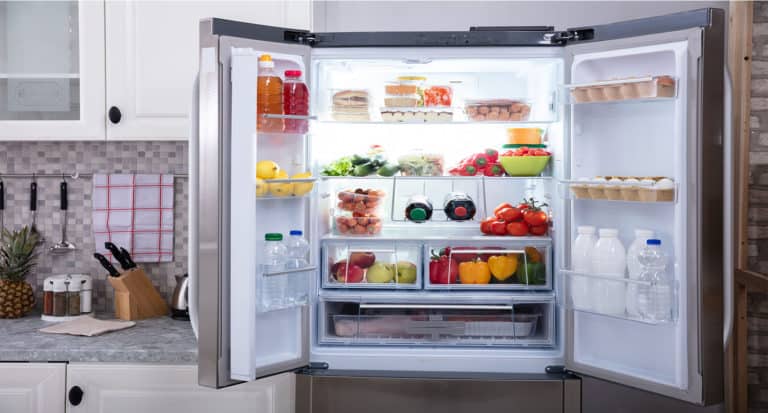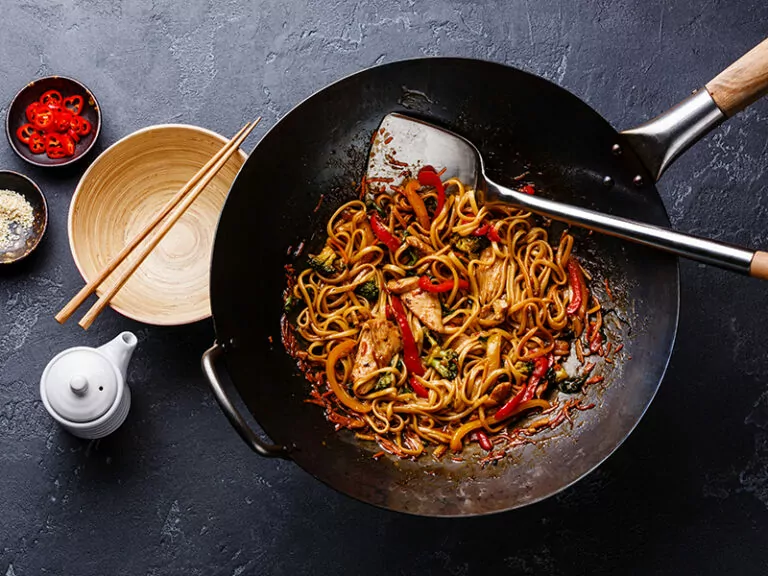Does anyone here know how do you keep raw meat fresh longer? Meat is an important source of protein and also a staple in many meals of families across the world. Not many people can resist the temptation of gourmet steaks or a perfectly roasted turkey.
However, when the meat is not yet readily cooked and served on the table, not everyone knows how to handle and store it properly. Storing meat can be very tricky for people unfamiliar with home cooking and dealing with raw ingredients.
Don’t let your juicy, protein-packed meat go to waste. Follow me to learn about the detailed steps on storing your raw meat and when you should dispose of it for the sake of your health.
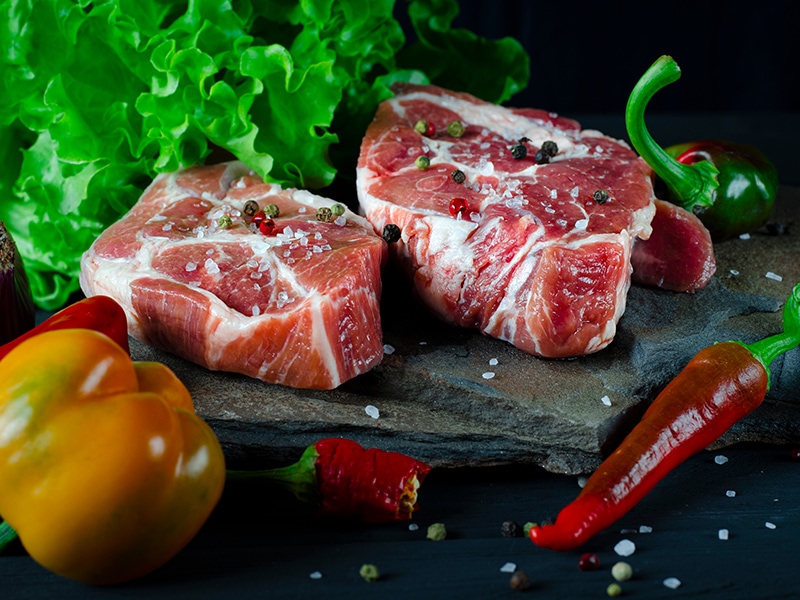
Basic Facts About Meat
Meat has been an important part of the human diet since prehistoric times. Whether hunted, farmed, or scavenged, meat has supplied people with essential nutrients to survive and build their civilization.
Until today, meat has played a prominent role in the food industry, economies, and cultures all over the world.
The Roles Of Meat In Cuisine
Meat is an essential ingredient in most cuisines due to its high nutritional and culinary value. Meat is a great source of protein, minerals, and vitamins.
A balanced and healthy diet should consist of multiple protein sources like eggs, fish, and beans. All kinds of meat should be cooked or processed because raw meat contains a lot of harmful bacteria (1).
Throughout history, people have invented many wonderful ways to turn raw meat into delicious dishes, such as roasting, frying, sauteing, grilling, and fermenting.
In cooking, meat is the soul of many main dishes. In many cooking recipes, other ingredients, such as herbs, spices, and vegetables, are added only to complement the flavors of the meat.
Many famous combinations like chicken and wine, beef and veggies, or pork and herbs stole the hearts and appetites of people all around the world.
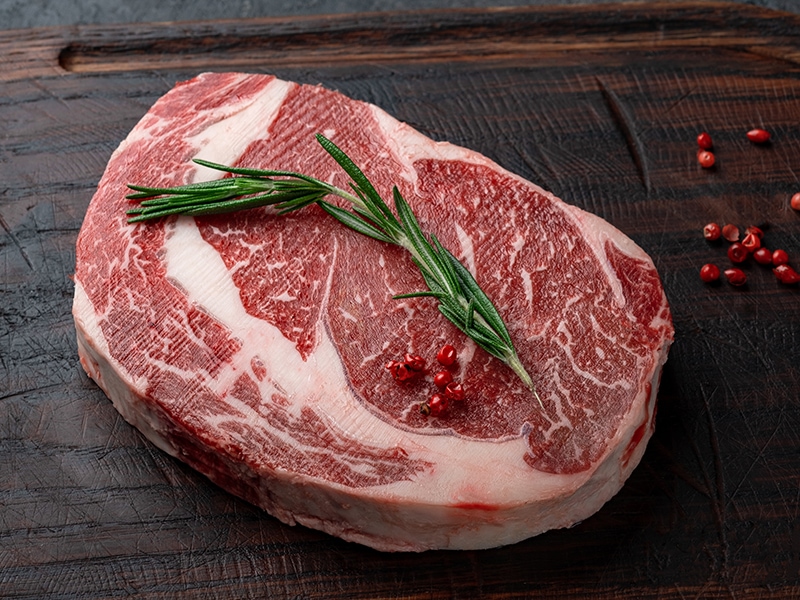
Types Of Meat
There are two distinctive types of meat: red meat and white meat. Their colors suggest that they hold striking differences in terms of nutrition and taste.
Red Meat
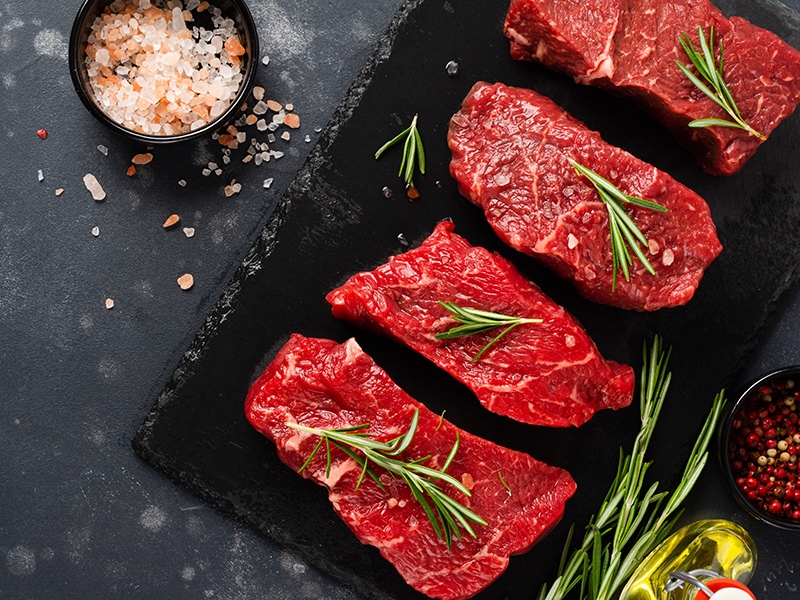
Red meat, such as beef or pork, contains more myoglobin, which is the cell responsible for transporting oxygen to muscles. Meats with more muscles used are typically darker. Red meats include beef, pork, lamb, and goat.
Red meat comes with higher fat content, more calories, and more vitamins like zinc, iron, and B vitamins(2). Due to the high saturated fat, red meat is not healthy if consumed too much.
Red meat is juicy and comes with a stronger taste, so it’s suitable with high-temperature cooking methods like roasting, grilling, or pan-frying to render the fat and tune up the juiciness.
Learn some useful facts about red meat to have a better choice for your diet.
White Meat
White meat includes any kind of meat with white color, like chicken or duck, when cooked or uncooked. White meat is pale in color due to its low myoglobin content. White meat typically includes poultry and birds.
White meat is also low in saturated fat, which makes it safer to consume in larger quantities. It’s a greater source of protein and low in calories, making it a great choice for post-workout and weight-loss diets.
White meat is lean and light in flavor. It tends to get dry when cooked, so it’s better fitted with methods that retain moisture in the meat, like boiling, steaming, or poaching.
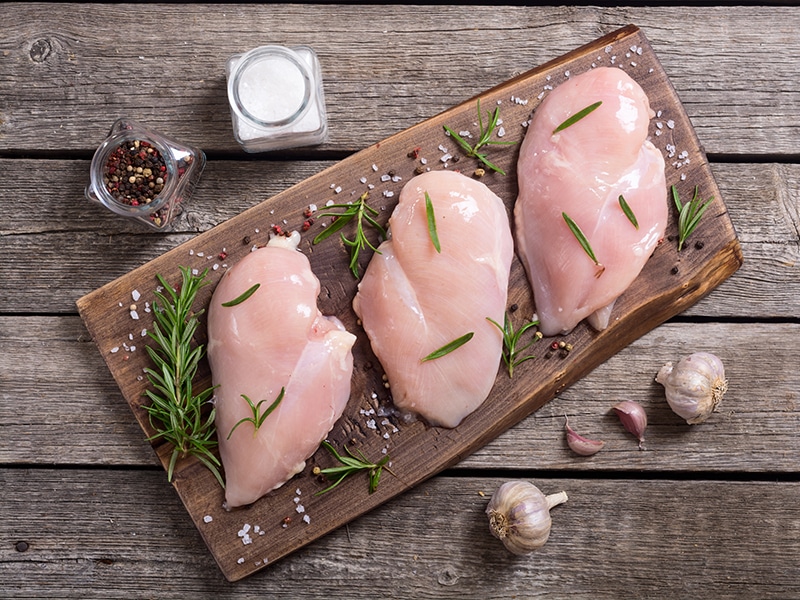
The Shelf Life Of Raw Meat
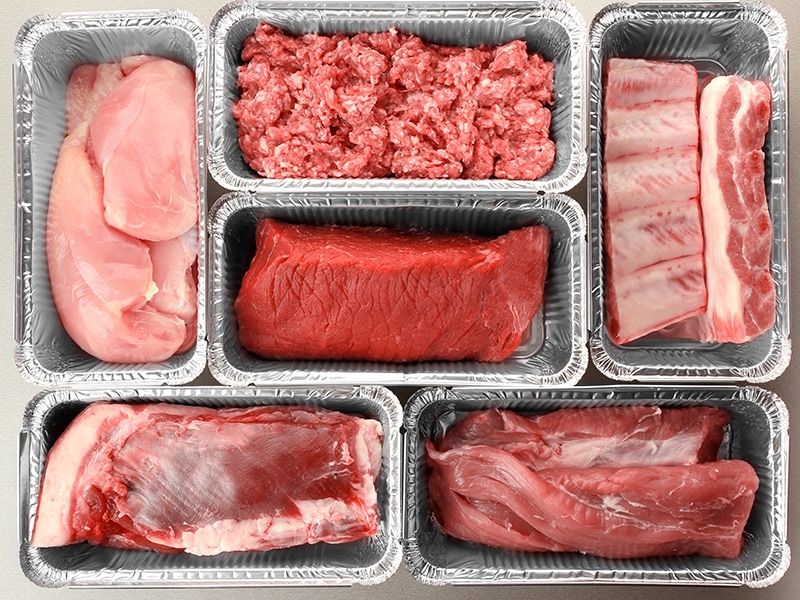
Each type of fresh meat has a different speed of rotting. Learning about the shelf life of each kind of meat is essential in storing it. Here is a brief table of information for you:
As you can see in the table, most red meat like beef and pork can stay fresh longer than poultry, up to 5 days in the fridge and 12 months in the freezer, due to higher pH content.
Chicken, fish, and seafood are among the types of raw foods with the shortest shelf life. They are also the most potent potential sources of cross-contamination in your fridge.
Chicken and other poultry can last 1-3 days in the fridge. For lamb, it can stay fresh in the fridge for 3-5 days and 3 months in the freezer.
Fish should be consumed as soon as you can to retain its freshness. With 1-2 days in the fridge and up to 3 months in the freezer, you should find a way to fit your fish on the menu.
Cooked seafood is more resilient, which lasts 3-4 days in the fridge and 6 months frozen. The reason ham can stay longer than sausage is that it went through smoke treatment. It can last 3-5 days in the fridge and up to 6 months in the freezer.
On the other hand, sausage contains seasonings that make it more susceptible to spoilage. It can only last 1-2 days in the fridge and 1-2 months in the freezer. Make sure to eat your sausages as soon as possible for the best freshness and flavor.
Learn how to defrost your raw meat properly for the best result.
How To Store Raw Meat In The Fridge Safely
There are many ways to store raw meat, but refrigeration is undoubtedly the best way to keep it in good condition. If all you have to do is put your meat in the fridge, why should you read anything about storing meat? There is much more to raw meat storage than you might think!
Temperature Of The Fridge
The ideal temperature of the fridge for storing raw meat is 28°F-32°F (-2°C-0°C). Your raw meat should sit in the coldest part of your fridge, which is the bottom area inside.
When the temperature increases to 40°F, your meat will begin to rot faster. At 50°F, bacteria will begin to thrive rapidly. If your fridge doesn’t have a built-in thermometer, you can put a thermometer in a glass of water in the fridge to check the temperature before storing your meat.
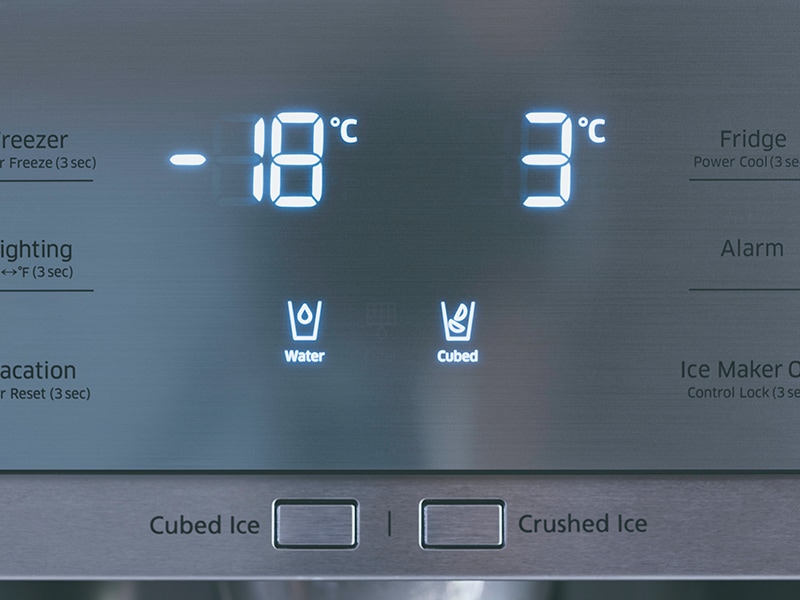
Best Container To Store Raw Meat In the Fridge
The best container is the original package you bought the meat from the store. It was sterilized and vacuumed before going to the shelf. Opening it will cause the bacteria in the environment to dwell on your meat.
Most raw meat comes in Styrofoam dish packages with a slight lip. They are safe in the fridge, and there’s no need to transfer the protein to another container.
Butcher paper is also suitable for the fridge since it’s designed to store meat for multiple days. If you have to open the package, transfer the meat to an air-tight container such as a plastic box or air-tight zip bag.
That will help retain the juice in raw meat and prevent it from leaking out to contaminate other foods.
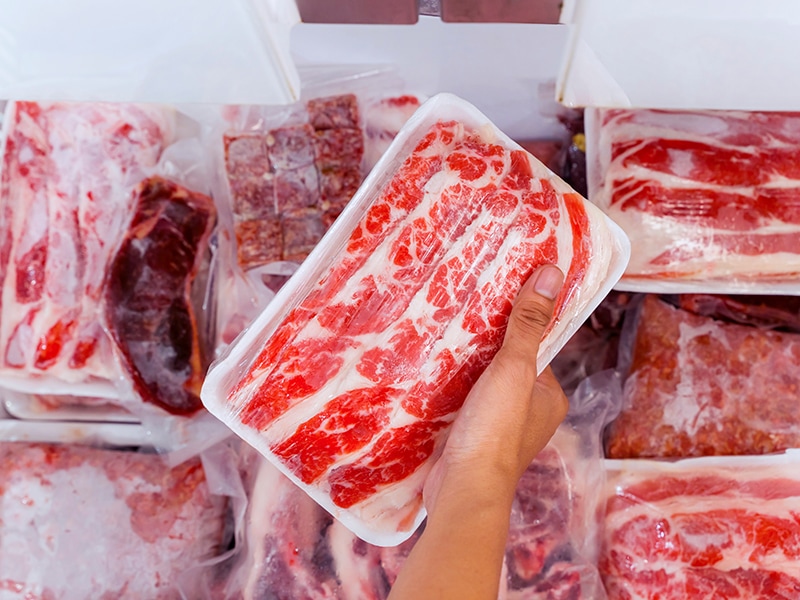
Organization
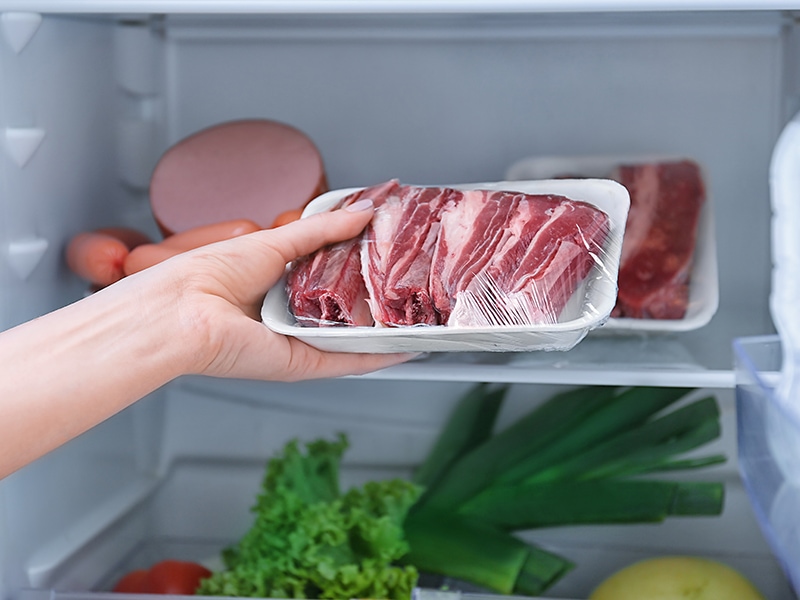
Organizing your meat in the fridge is also important to keep the contents of your fridge safe. The best place to keep your raw meat is on the bottom shelf.
This section is ideal for storing raw proteins such as raw meat, fish, and poultry. It can prevent the juice in those foods from dripping onto other items. Otherwise, the escaping juice makes your fridge dirty and causes cross-contamination with other foods.
Remember to store raw meat from prepared food and cooked leftovers. Furthermore, there is a hierarchy of how raw items should be placed on shelves. Raw meat goes below prepared foods, fruits, vegetables, fish, and seafood while staying above ground meat and poultry.
This order lets you know the cooking temperature of each item for the sake of safety. As you go down your shelves, the recommended cook temperatures of the ingredients go up.
A drawer is not suggested unless it’s reserved for storing meat. Also, avoid putting your meat near any ready-to-eat foods because that might lead to contamination.
These tips will help you keep your meat fresh for longer.
Using Cover
Never expose your meat to the air, even in your fridge. Your raw meat is the promised land of harmful bacteria. Without any type of covering, the bacteria will quickly turn it into their breeding ground.
Always use a plastic bag or lid to prevent your meat from air exposure. Moreover, leaving your meat uncovered in the fridge will cause it to spread an unpleasant odor to all the contents in your fridge. It will take ages for that smell to fade away.
How To Store Fresh Meat In The Freezer
Freezing meat can extend its shelf life by a great deal. The first thing you have to do is check the freshness of your meat, then proceed to the next preparation steps before freezing. Use a paper towel to remove any liquid on the cut of meat.
After that, put it in a good container, which can be a hermetically sealed plastic, freezer-safe plastic bag, or glass container. Remember to label the date of freezing on the container. That’ll help you keep track of the day of storage.
If you don’t have a proper container, you can vacuum pack the meat with food vacuum equipment or wrap it in plastic films.
Before using, you should transfer the meat into the refrigerator until it is thawed. After that, you can take out your meat and use it like any meat stored in the refrigerator.
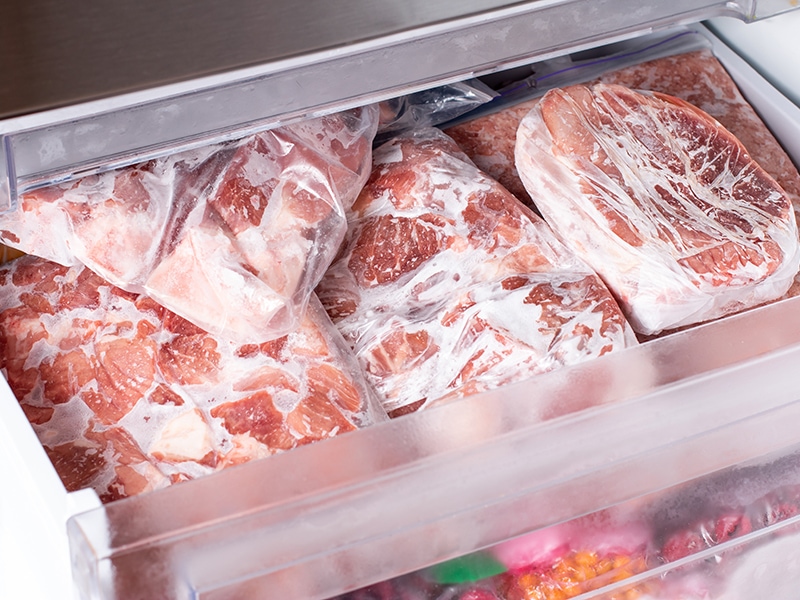
Tips To Keep Your Raw Meat Fresh For Longer
You should pay attention to the suggested shelf life of each type of meat. However, there are many tips that can help you extend the shelf life of your fresh meat. Here are some useful points you should be mindful of.
- Always purchase the product before the expiration date. The best-by date doesn’t dictate the safety of your meat, but it’s a good indicator of its freshness.
- You should not open the fridge regularly and for a long time if not needed, especially on hot and humid days. Doing this will raise the temperature of your fridge by a whole lot.
- Remember to clean the container, utensils, surfaces, and your hands carefully before and after you handle raw meat. Doing so can minimize the bacteria brought to the meat.
- If you feel you cannot eat your meat before its shelf life, you should consider tossing it into the freezer. Always write the date of storage on the container before freezing. That will help you to use the product in a more timely manner.
- Moreover, make sure to check the temperature of your fridge regularly. The ideal temperature is around 28°F-32°F (-2°C-0°C). Within this range, bacteria spread more slowly, or they can hardly grow at all.
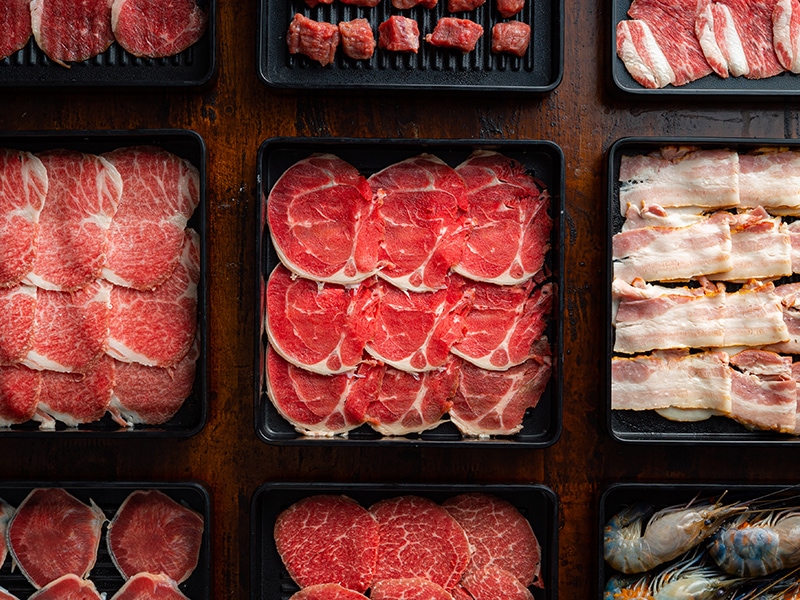
Alternative Ways To Store Meat
Apart from refrigeration or freezing, there are still some ways, some of which are traditional, to preserve your meat. Here are some of my suggestions:
Salting
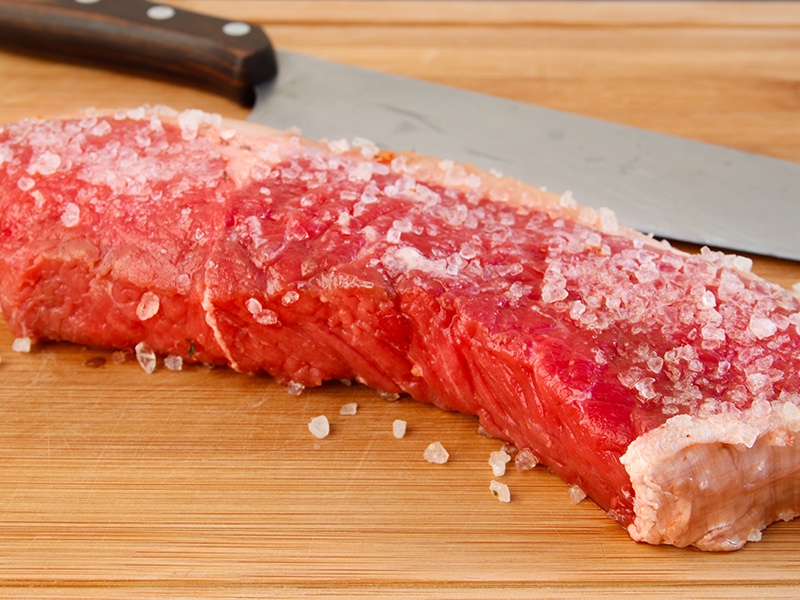
This method is very simple and quite effective if your fridge is full or broken down. The first thing to do is to use a curing salt to cure the meat thoroughly. Keep the meat in a jar or air-tight bag and store them in a cool place.
Salt-cured meat can last up to 4 months at room temperature. You just have to rinse off the salt before cooking.
Drying
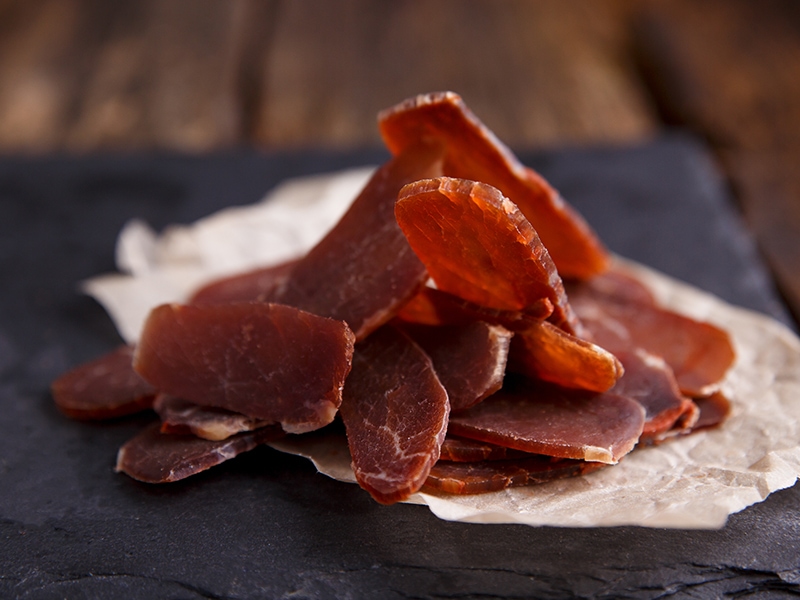
Preserve your meat by turning it into jerky. First, you should cut the meat into narrow strips and then boil it on the stove to kill off the bacteria.
Next, take the meat out and let it dry out. The next step is to bake in an oven for 8-12 hours. Dry meat will last 1-2 months in air-tight containers at room temperature.
Learn how to dry your meat with the most simple steps.
How To Tell If Your Meat Has Gone Bad
Each kind of raw meat exhibits different signs of spoilage. You should examine them carefully and watch out for unusual odor, color, or texture. In case of uncertainty, dispose of it to be safe. Consuming spoiled meat can be detrimental to your health.
The Foul Smell
If your meat smells pungent and rancid, it is likely spoiled. Spoiled meat has an unpleasant ammonia scent. Some steaks can have an egg-like smell. Throw your meat away and clean your fridge where you store it to prevent cross-contamination.

Discoloration
Spoiled meat tends to turn green, and in poultry, it’s grayish. That’s an alarming sign of the meat not being safe to consume anymore. However, it may be because of exposure to heat, light, or processing that creates the unusual color. Double-check to make sure about the protein’s quality.
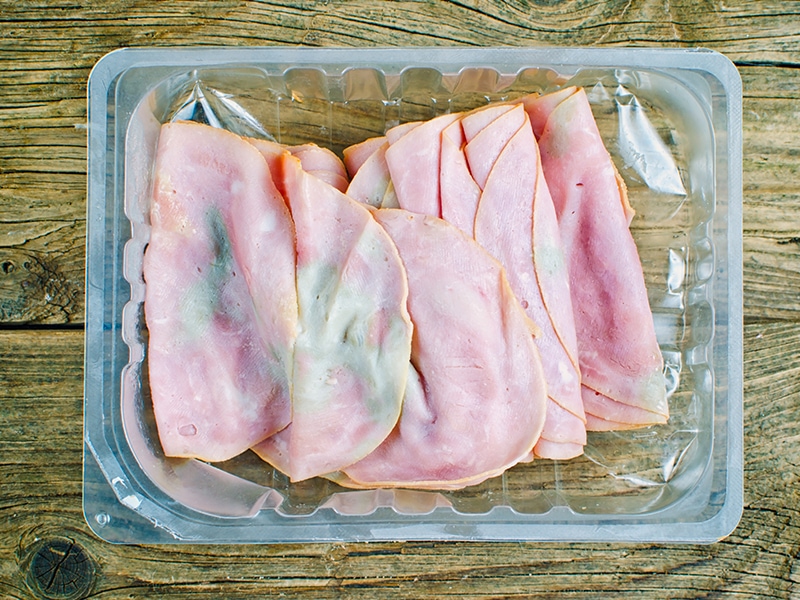
Soft And Sticky Texture
There is a certain stickiness on the surface of spoiled meat. It feels like a slimy coating over the meat. That’s a sign bacteria have colonized and started to thrive on your meat. At this point, it’s not safe to eat any longer.
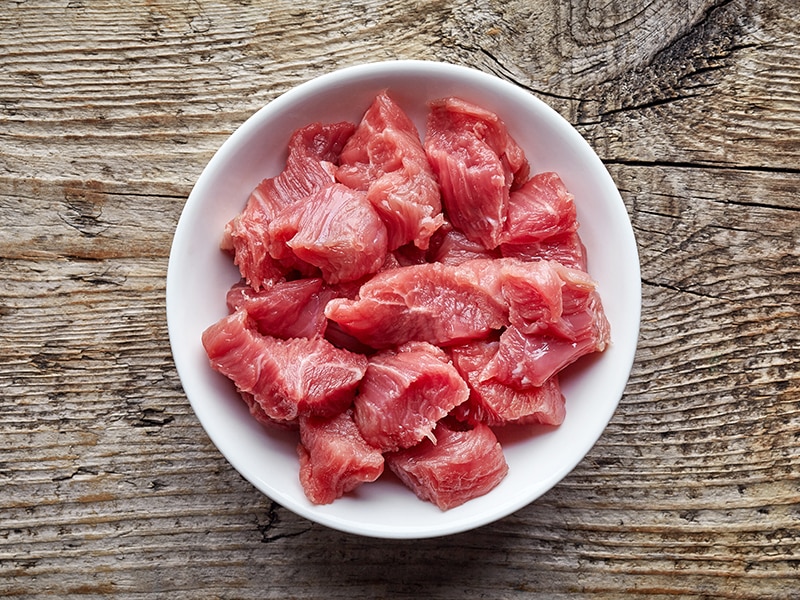
Mold
Apart from the above signs, if you see moldy spots appear on the surface of your meat, it’s a sure sign your meat has gone bad. Removing the mold or washing them away will not do you any good since the meat has been contaminated.
Again, you should throw the meat away when in doubt. Spoiled meat is a million times more harmful than spoiled vegetables. It may lead to severe food poison and various fatal diseases.
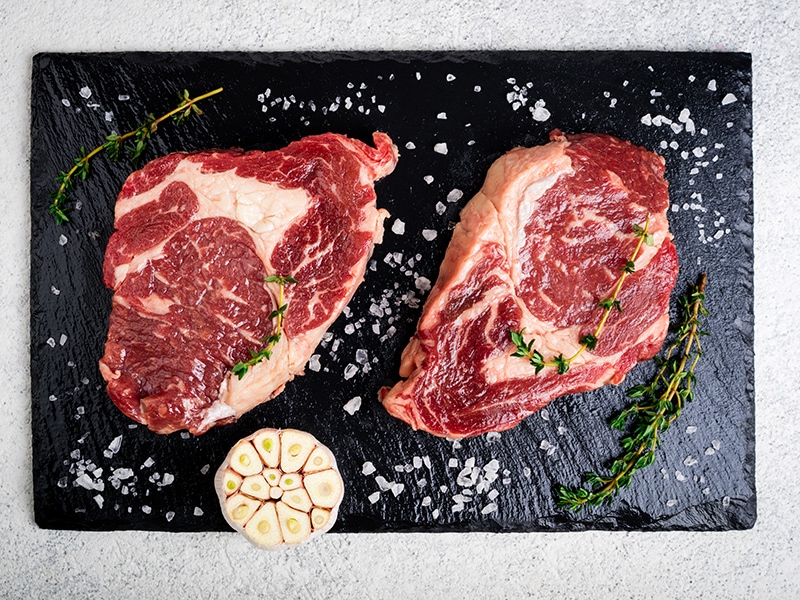
FAQs
You have equipped yourself with knowledge about keeping your raw meat in a safe condition. It’s time to solve some related problems in this section:
Healthy Meat, Healthy Diet!
By correctly and carefully storing raw meat, you will prevent spoilage in your meat, thus improving the quality of your diet. Healthy eating is not only in the choice of foods and methods but also in how you store them.
Learn to store your meat mindfully to make the most out of fresh and delicious meat. That’s the end of my article. Please leave a comment in the section to share your tips for storing meat. Don’t forget to share this article with those who are in need too!
References
- Meat (2022) Wikipedia. Wikimedia Foundation.
- Klurfeld, D.M. (2018) What is the role of meat in a healthy diet?, Animal frontiers : the review magazine of animal agriculture. U.S. National Library of Medicine.


